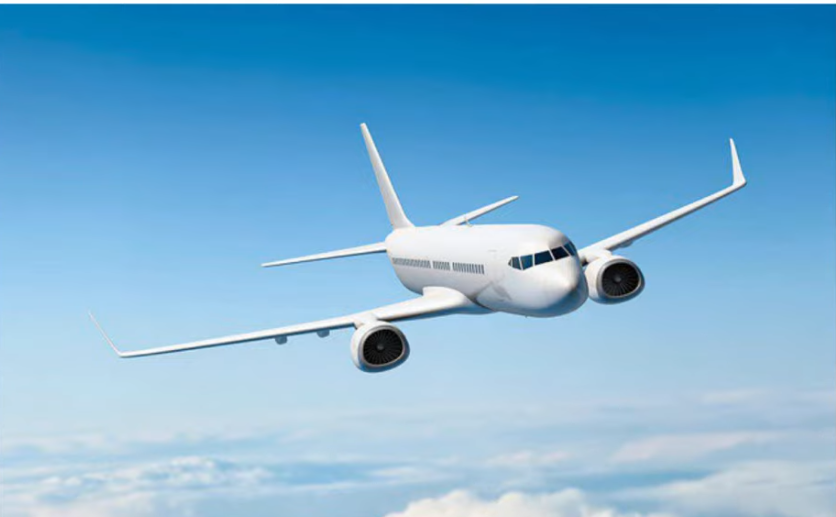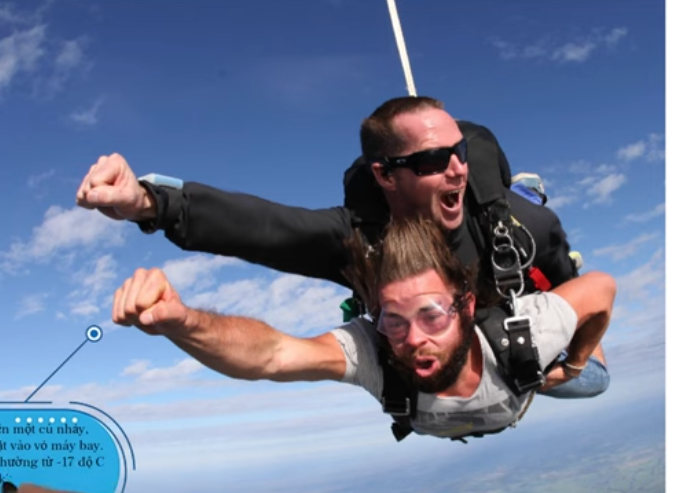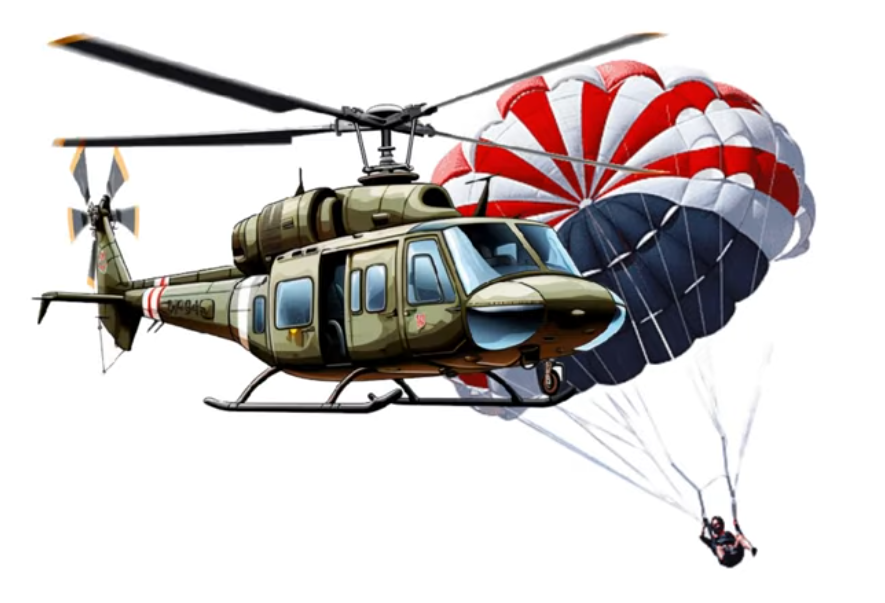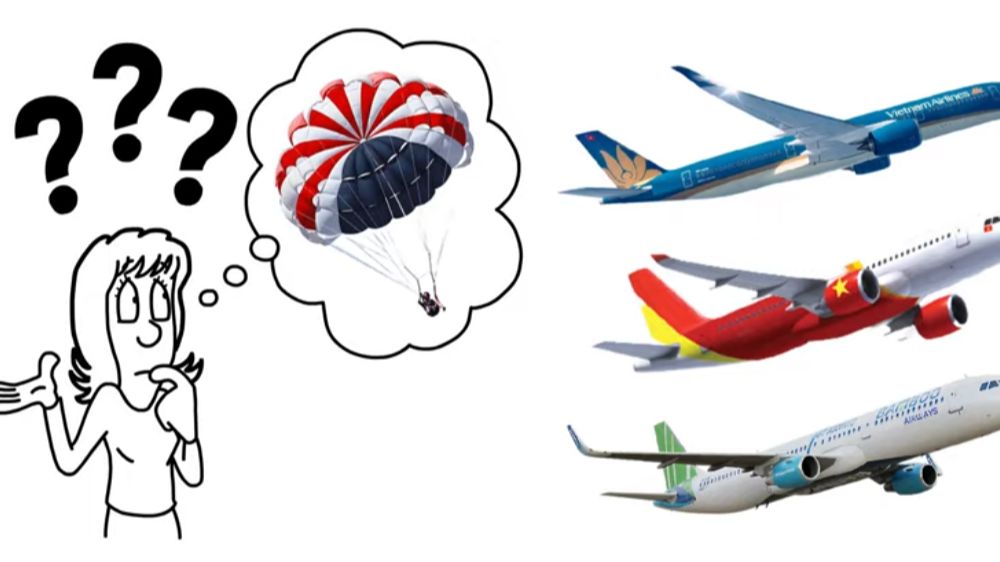Have you ever seen parachutes on commercial flights of Vietnam Airlines, VietjetAir, or Bamboo Airlines? It might be quite difficult, right? But in American movies, it's not unusual; the image of people jumping out of planes with a parachute on their back is probably an essential tool on all aircraft, especially military planes. But why is it that to this day, no commercial aircraft in the world is equipped with parachutes for all passengers on board? Let's explore this in today's story.
Yes, if you watch a lot of action or sci-fi movies, you might think that parachuting is as easy as pie. Just like in the movies, you jump out of the plane when the door is open, free-falling through the air until a certain distance, then deploying the parachute and gently landing on the ground. If you're really unlucky, you might land in a pig farm or something. After that, you walk out unharmed as if nothing happened.

However, it might just smell a bit, but don't be fooled by the art and cinema that create illusions, because in reality, parachuting is not simple at all; it requires meticulous training and guidance because if something goes wrong, parachute students are immediately given a one-way ticket to meet their ancestors. In parachuting classes, newcomers are tightly strapped to instructors and continuously receive thorough guidance from A to Z. For some brave individuals who want to jump out alone, they still have to undergo hours of high-intensity training on the ground, including learning body movements while flying or hand signals that instructors will use when flying with students.
This is to show that parachuting is a very difficult task, not as simple as in the movies, and thus not everyone on a plane knows how to parachute. Each commercial flight has dozens to hundreds of passengers, and these passengers have never been trained in parachuting skills while also panicking when the plane encounters an emergency, for example. Therefore, there is almost no hope that these passengers will follow the proper procedures to avoid colliding with each other when parachuting. Not to mention that some people are afraid of heights and might faint before they even jump, which is much more dangerous. Thus, the first and biggest reason why commercial planes do not equip parachutes for passengers relates to human skills.
Another important factor is the technical aspect; while helicopters typically operate at altitudes of around 3,000 meters, or parachute demonstration planes operate from 4,500 to 5,000 meters, most commercial aircraft fly at altitudes above 10,000 meters to comply with regulations from air traffic control agencies, with speeds reaching about 1,000 km/h being normal. The altitude is double, and the speed is at least five times higher than that of parachute demonstration planes. Besides the reason that panicking passengers cannot adhere to the principles of parachuting we just mentioned, at this altitude, if a jump is made, the body could be shattered or stuck to the aircraft's exterior, and the temperature at this height is usually very low. This can cause the eyes, mouth, and nose to freeze instantly, and the lungs are also significantly affected. Additionally, starting from an altitude of about 4.5 km, passengers need to be provided with oxygen; if the emergency exit is opened at that altitude, the aircraft will not be pressurized, and the human body will face immense pressure.
Moreover, no one designs commercial aircraft for people to jump out of. For demonstration or military aircraft, whether small or large, there are suitable designs for parachuting. For example, side doors or slopes on the aircraft allow parachutists to move easily and exit. In contrast, commercial aircraft are usually large and do not have suitable slopes for parachuting. At this point, if passengers jump out of the plane, they could face significant risks of colliding with the fuselage or wings, resulting in severe injuries or even death.

Another reason is that the ideal moment to deploy a parachute from an aircraft is when it is in motion. However, statistics show that most fatal plane crashes occur during takeoff and landing. During these times, parachutes are completely useless, and aircraft incidents often happen in bad weather. When the weather is bad, parachuting is certainly known to lead to disastrous outcomes. Not to mention that each parachute can weigh up to ten to twenty kilograms, significantly increasing the total weight of each flight. Additionally, a complete parachute suit with full protection is also very expensive. This represents a substantial additional cost for airlines.
Interestingly, there have been people who fell from planes without parachutes but still survived. A company in Geneva, Switzerland, has reported that from 1940 to 2008, 157 people fell from planes without parachutes but survived, and 42 of those survived after falling from heights above 3 km. A rare case occurred during World War II when a pilot was shot down; he fell from a height of 5 km. Fortunately, he got caught in some pine branches and landed on soft snow, so he suffered almost no serious injuries, only a sprained ankle.
Commercial Aircraft
Why do they usually fly at altitudes above 10,000 meters? Why this number and not another? First, at this altitude, it depends on the stratosphere of the atmosphere. Here, the air resistance is low, allowing the aircraft to move faster, thus saving some fuel and costs for the airline. Furthermore, when flying at this altitude, the aircraft typically avoids most bad weather phenomena; no matter how heavy the rain or strong the wind, it does not affect the flight process. However, when there is a storm and lightning, airlines often delay or cancel flights to ensure maximum safety for passengers, which is closely related to the takeoff and landing phases.

Additionally, at this altitude, commercial aircraft can avoid obstacles in the air, which could be mountains. For example, Mount Everest is over 8,800 meters high, and even unexpected things like drones, birds, and light aircraft fly at lower altitudes. Finally, at altitudes above 10,000 meters, if an engine fails or any part of the aircraft malfunctions, the pilot will have more time to handle the situation and find a safe landing spot.
